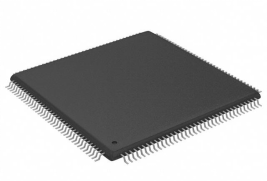What functions can the FPGA replace the DSP and MCU?
Since its inception, FPGA has been known for its powerful flexibility. The biggest feature of FPGA is that it can be programmed, erased, used repeatedly or with different hardware circuits to achieve different functions without changing the peripheral circuit. And with the advancement of process technology, the power consumption of FPGA is continuously reduced and the speed is reduced. Gradually increase, and the cost is getting lower and lower. Therefore, in some areas, either in place of DSPs or as coprocessors for DSPs, it provides a fast, low-cost solution for many complex applications that require DSP functionality.
Although FPGAs are also programmable compared to DSPs, FPGAs are better suited for high-performance, computationally intensive applications. FPGAs can achieve the required functions of the product with greater parallelism. In some specific applications, FPGA can replace the functions of DSP, for example, motion estimation of video coding. In order to search for the best motion vector, the best coding is done. The video quality requires a large number of computing units to search. Since DSP does not have a large amount of parallel processing capability, if DSP is used, it will not be able to do well. With FPGA, the parallel workability of its hardware logic is used to bring higher quality to video quality. At present, FPGA has replaced DSP in many occasions.
l Bus interface
FPGAs support a wide range of interface standards and are ideal for bus bridging applications. Whether it's a serial interface such as Serial RapidIO, VLYNQ, and PCI Express, or a parallel interface such as PCI and PCI-X, FPGAs can meet the interface and bridging needs.
l Memory interface
FPGAs can be used to bridge memory with different standards such as DDR and DDR2.
l Integrated system logic
Reducing system cost is often an important factor in extending the life of the product market. Integrating system glue logic into an FPGA reduces the number of bills of material, reduces size, and saves money.
l Implement new peripherals
Although DSP processors already provide the appropriate set of peripherals in the device, custom peripherals are often required in the design, so FPGAs that work with DSP processors can provide new peripherals and peripheral upgrades. The flexibility needed.
l In addition, with the advent of the System On a Programmable Chip (SOPC), quite a number of FPGAs have integrated DSPs or CPUs. Currently, Xilinx and Altera FPGAs can do this. They can not only integrate their own. Soft core, and can integrate the current popular hard core such as PowerPC and ARM. In this way, the FPGA can fully realize the functions of the DSP and MCU. Moreover, the FPGA can add some custom instructions in the built-in embedded processor, so that some specific algorithms can be quickly completed, and the chip pins can be defined as needed.
Xilinx 's well-known XtremeDSP technology introduces DSP blocks into FPGAs. XtremeDSP technology is a high-performance custom DSP solution for the aerospace and military products, digital communications, multimedia, video and imaging industries. The XtremeDSP platform product includes two major families - Virtex DSP and Spartan DSP - offering a wide range of price, performance, power, bandwidth and I/O options for applications in the communications, MVI (multimedia, video and imaging) and military products industries requirements.
FPGA: XC6SLX4-2TQG144I of Xilinx

If you want to know more, our website has product specifications for FPGA, you can go to ALLICDATA ELECTRONICS LIMITED to get more information.

